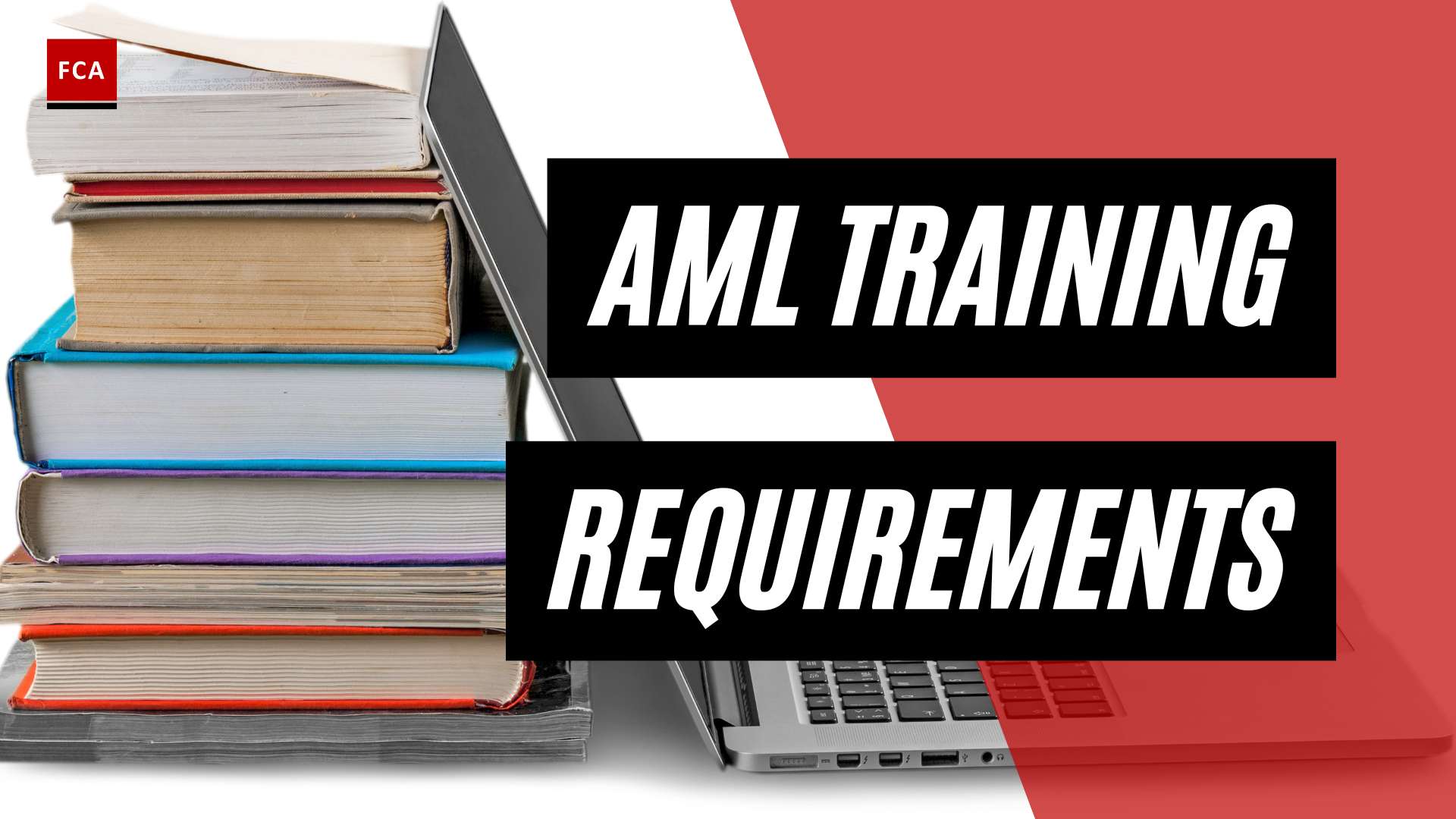Understanding FATF Recommendations
In the realm of AML (Anti-Money Laundering) compliance, the Financial Action Task Force (FATF) plays a significant role in setting international standards and providing guidance to combat money laundering and terrorist financing. Understanding the FATF recommendations is crucial for organizations and professionals working in compliance, risk management, and anti-financial crime.
Introduction to FATF Recommendations
The FATF is an intergovernmental organization that sets global standards and promotes effective implementation of legal, regulatory, and operational measures to combat money laundering, terrorist financing, and other related threats. The FATF’s recommendations provide a comprehensive framework for countries to establish robust AML/CFT (Anti-Money Laundering/Combating the Financing of Terrorism) regimes.
The recommendations cover various aspects of AML/CFT, including customer due diligence, record-keeping, suspicious transaction reporting, international cooperation, and risk-based approaches. These recommendations have been widely adopted by jurisdictions worldwide to strengthen their AML frameworks and safeguard the integrity of the financial system.
Importance of Risk Assessment in AML Compliance
A key element emphasized by the FATF recommendations is the importance of conducting risk assessments in AML compliance. Risk assessment is a systematic process that enables organizations to identify, understand, and mitigate the risks associated with money laundering and terrorist financing.
FATF’s Recommendation 1 highlights the need for countries to identify, assess, and understand the terrorist financing risks they face. This risk assessment forms the foundation for developing an effective AML/CFT regime. It helps countries prioritize their responses and allocate resources based on the level of risk identified. The risk assessment process should be ongoing, periodically reviewed, and updated to adapt to evolving risks.
A comprehensive risk assessment involves considering various factors, such as the nature of the financial sector, the size and complexity of the jurisdiction, and the vulnerability to money laundering and terrorist financing risks. FATF provides guidance on assessing terrorist financing risks, including indicators, potential consequences, and vulnerabilities that could be exploited by terrorists.
By conducting risk assessments, organizations can tailor their AML measures to address the specific risks they face. This risk-based approach allows for more effective allocation of resources and focuses efforts on areas of higher risk. It also enables organizations to stay ahead of emerging threats and adapt their AML/CFT controls accordingly.
In summary, understanding the FATF recommendations is essential for establishing a robust AML framework. Risk assessment plays a vital role in AML compliance, helping organizations identify and mitigate money laundering and terrorist financing risks. By adopting a risk-based approach, organizations can enhance their AML measures and contribute to the global fight against financial crime.
Key Aspects of Risk Assessment
In order to effectively incorporate FATF recommendations into an AML framework, understanding the key aspects of risk assessment is crucial. Risk assessment forms the foundation of any robust AML compliance program, enabling organizations to identify, understand, and mitigate the risks associated with money laundering and terrorist financing. Let’s explore the framework for conducting risk assessments and the guidance provided by FATF on risk assessment.
Framework for Conducting Risk Assessments
The framework for conducting risk assessments involves a systematic and comprehensive approach to identify and evaluate the risks faced by an organization. It typically consists of the following steps:
-
Risk Identification: This step involves identifying the inherent risks associated with money laundering and terrorist financing within the organization’s operations, products, services, and customer base. It is essential to have a clear understanding of the different risk factors and vulnerabilities present.
-
Risk Assessment: Once the risks have been identified, they need to be assessed to determine their likelihood and potential impact. The assessment should consider factors such as the probability and severity of the risks, availability of relevant data and information, and the organization’s exposure to different risk scenarios.
-
Risk Mitigation: Based on the assessment, appropriate risk mitigation measures should be developed and implemented. This may include policies, procedures, controls, and ongoing monitoring activities aimed at reducing the identified risks to an acceptable level.
-
Monitoring and Review: Risk assessments should be reviewed and updated regularly to reflect changes in risks, vulnerabilities, and developments in the AML/CFT environment. It is important to ensure that the risk assessment remains relevant and effective over time.
FATF’s Guidance on Risk Assessment
FATF provides guidance on conducting risk assessments to its member countries, with the latest update available as of 24th February 2023 (FATF). The guidance emphasizes the following key aspects:
-
Comprehensive Risk Assessment: A comprehensive risk assessment should cover all relevant AML/CFT risks, including those associated with money laundering and terrorist financing. It should consider both domestic and international risks, taking into account the specific characteristics of the jurisdiction and the sectors within it.
-
Factors to Consider: During the risk assessment process, consideration should be given to the probability and severity of the risks, as well as the availability of relevant data and information. This ensures that the risk assessment is comprehensive, effective, and in line with the international standards set by FATF.
-
Updating and Reviewing Risk Assessments: FATF recommends that risk assessments should be updated regularly to reflect changes in risks, vulnerabilities, and developments in the AML/CFT environment. Additionally, jurisdictions should consider undertaking focused risk assessments in specific areas or sectors where risks are deemed higher.
-
Coordination and Cooperation: Effective coordination and cooperation among competent authorities and other stakeholders are essential during the risk assessment process. This collaboration helps in sharing information, resources, and expertise to address AML/CFT risks comprehensively.
By following the framework for conducting risk assessments and incorporating FATF’s guidance, organizations can enhance their AML compliance efforts and effectively manage the risks associated with money laundering and terrorist financing. It is important to continually monitor and review the risk assessment process to ensure its ongoing relevance and effectiveness in combating financial crimes.
FATF Recommendations for Risk Assessment
To effectively combat terrorist financing and protect the international financial system, the Financial Action Task Force (FATF) recommends that countries establish a robust risk assessment process. This process allows countries to identify, assess, and understand the terrorist financing risks they face, enabling them to design and implement appropriate measures to mitigate those risks. A comprehensive risk assessment framework is crucial for effective anti-money laundering (AML) compliance.
Elements of a Comprehensive Risk Assessment
A robust risk assessment process for terrorist financing involves several key elements. These elements include:
-
Establishing the Context: Countries should define the scope and objectives of their risk assessments, taking into account their unique characteristics, geographic location, financial systems, and relationships with high-risk jurisdictions. By understanding the context, countries can tailor their risk assessment frameworks accordingly.
-
Developing Typologies: Understanding the typologies of terrorist financing risks is essential for effective risk assessment. By analyzing past cases and patterns, countries can identify common methods, trends, and vulnerabilities associated with terrorist financing. This knowledge helps in the identification and assessment of risks.
-
Assessing Sources of Terrorist Financing: Countries should identify and evaluate the sources of terrorist financing within their jurisdiction. This includes analyzing both domestic and international factors, such as cross-border transactions, remittances, and relationships with high-risk jurisdictions.
-
Identifying Vulnerabilities: A comprehensive risk assessment should identify vulnerabilities within the financial system that can be exploited for terrorist financing purposes. By recognizing these vulnerabilities, countries can implement appropriate measures to strengthen their AML frameworks.
-
Understanding Consequences: It is important to assess the potential consequences of terrorist financing to ascertain the impact on national security, financial stability, and the integrity of the international financial system. This understanding helps in prioritizing resources and designing effective countermeasures.
Factors to Consider in Assessing Terrorist Financing Risks
When conducting risk assessments for terrorist financing, countries should consider a range of factors. These factors include:
-
Geographic Location: Countries with borders near high-risk areas or those used as transit points for illicit funds may face higher terrorist financing risks. Understanding the geopolitical context helps in assessing these risks accurately.
-
Financial Systems: The structure and complexity of a country’s financial systems can influence its vulnerability to terrorist financing. Assessing the resilience of financial institutions, the effectiveness of regulatory frameworks, and the level of transparency are crucial aspects to consider.
-
Cross-Border Transactions: Countries with significant cross-border transactions, remittances, or correspondent banking relationships may face higher risks of terrorist financing. Evaluating the volume and nature of these transactions helps in identifying potential vulnerabilities.
-
Relationships with High-Risk Jurisdictions: Countries with close ties to jurisdictions identified as high-risk for money laundering and terrorist financing should consider the potential impact on their risk assessments. Understanding the risks associated with these relationships is vital for effective risk mitigation.
Updating and Reviewing Risk Assessments
Risk assessments should not be static documents but rather dynamic and continuously evolving. FATF emphasizes that countries should regularly review and update their risk assessments to ensure they remain relevant and effective. This includes adjusting risk management strategies, implementing new measures, and addressing emerging terrorist financing threats. By keeping risk assessments up to date, countries can proactively combat evolving risks and safeguard their financial systems.
By incorporating the elements of a comprehensive risk assessment and considering the factors specific to terrorist financing risks, countries can develop effective AML frameworks that align with FATF recommendations. These risk assessments serve as the foundation for designing and implementing targeted measures to combat terrorist financing and protect the integrity of the international financial system.
Implementing a Risk-Based Approach
To effectively address the risks associated with anti-money laundering (AML) and combatting the financing of terrorism (CFT), it is crucial for institutions and authorities to adopt a risk-based approach. This approach emphasizes the importance of assessing and managing risks in a systematic and targeted manner. Three key aspects to consider when implementing a risk-based approach are the importance of a risk-based approach, effective supervision and enforcement, and coordination and cooperation in risk assessment.
Importance of a Risk-Based Approach
A risk-based approach is essential in AML frameworks as it allows for the allocation of resources and efforts based on the level of risk. By identifying and prioritizing higher-risk areas, institutions can focus their attention and resources on activities and transactions that pose a greater threat of money laundering and terrorist financing (FATF). This approach ensures that limited resources are utilized efficiently and effectively to mitigate the most significant risks.
Effective Supervision and Enforcement
To support the implementation of a risk-based approach, effective supervision and enforcement are crucial. Jurisdictions are encouraged to allocate resources based on the level of risk, ensuring that supervisory efforts are concentrated on areas with higher risk exposure. This targeted approach enhances the effectiveness of AML/CFT measures and facilitates the prevention and detection of financial crimes (FATF).
Supervisory authorities play a vital role in overseeing the implementation of risk-based approaches by monitoring and assessing the measures taken by reporting entities. This includes evaluating the use of risk assessments and the effectiveness of risk mitigation measures. The understanding of how risk assessments are being utilized helps establish effective supervision and enforcement regimes (FATF).
Coordination and Cooperation in Risk Assessment
FATF emphasizes the need for effective coordination and cooperation among competent authorities and other stakeholders during the risk assessment process. Collaboration allows for the sharing of information, resources, and expertise, enabling a comprehensive approach to addressing AML/CFT risks. By working together, jurisdictions can enhance their understanding of risks and develop robust risk assessment methodologies.
During risk assessments, consideration should be given to the probability and severity of risks, as well as the availability of relevant data and information. This ensures that risk assessments are comprehensive, effective, and in line with international standards set by FATF. It is also important to regularly update risk assessments to reflect changes in risks, vulnerabilities, and developments in the AML/CFT environment. Additionally, focused risk assessments in specific areas or sectors where risks are higher can provide valuable insights for targeted risk mitigation (FATF).
By implementing a risk-based approach, institutions and authorities can strengthen their AML frameworks and enhance their ability to identify, assess, and mitigate the risks associated with money laundering and terrorist financing. Effective supervision and enforcement, along with coordination and cooperation in risk assessment, are essential components of this approach, ensuring the integrity and effectiveness of AML/CFT measures.
Applying FATF Recommendations
To effectively combat money laundering and terrorist financing, it is crucial to apply the recommendations provided by the Financial Action Task Force (FATF). In this section, we will explore how these recommendations are applied in the context of risk assessment in anti-money laundering (AML) and countering the financing of terrorism (CFT) regimes.
Risk Assessment in AML/CFT Regimes
FATF emphasizes the importance of conducting risk assessments to identify, assess, and understand the risks associated with money laundering and terrorist financing. Countries, regions, or even the world can undertake risk assessments to effectively identify and mitigate these risks (FATF). By establishing a robust risk assessment framework, countries can gain valuable insights into the vulnerabilities they face and design appropriate measures to combat these risks.
A comprehensive risk assessment process includes several key elements, as recommended by FATF. This includes establishing the context, developing typologies of terrorist financing risks, assessing the sources of terrorist financing, identifying vulnerabilities, and understanding the potential consequences of terrorist financing (FATF). By systematically assessing the risks associated with money laundering and terrorist financing, countries can prioritize their efforts and allocate resources effectively.
National and Sector-Specific Risk Assessments
FATF’s recommendations on risk assessments extend beyond individual countries. They are applicable to FATF member countries as well as other high-risk and monitored jurisdictions within the FATF Global Network. These recommendations provide guidance on conducting risk assessments at the national level, considering both domestic and international sources of information (FATF).
In addition to national risk assessments, sector-specific risk assessments are also essential. Different sectors, such as financial institutions, cryptocurrency exchanges, and correspondent banking, may face specific money laundering and terrorist financing risks. Conducting risk assessments tailored to these sectors allows for a more targeted and effective approach to combating illicit activities. For more information on sector-specific risk assessments, refer to our article on FATF recommendations for AML compliance.
Role of Risk Assessments in Combatting Terrorist Financing
The primary objective of risk assessments in AML/CFT regimes is to identify, assess, and understand the terrorist financing risks faced by countries. By comprehensively evaluating these risks, countries can design and implement measures to combat terrorist financing effectively. FATF emphasizes that a robust risk assessment process is crucial to protect the international financial system from the threats posed by terrorist financing (FATF).
Risk assessments play a vital role in identifying the sources and vulnerabilities associated with terrorist financing. By understanding these risks, countries can develop targeted policies, regulations, and enforcement measures to disrupt and prevent the financing of terrorist activities. Effective risk assessments enable countries to allocate resources efficiently and focus their efforts on areas of highest risk. This enhances the overall effectiveness of AML/CFT measures and contributes to global efforts in combatting terrorist financing.
By applying FATF recommendations, countries and relevant sectors can strengthen their risk assessment processes and enhance their ability to detect, prevent, and combat money laundering and terrorist financing. These risk assessments serve as a foundation for developing robust AML/CFT frameworks and play a crucial role in safeguarding the integrity of the global financial system.








